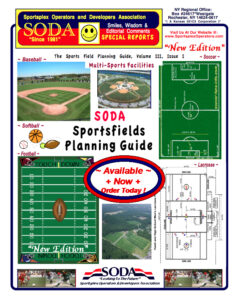
The thrill of Friday night lights illuminating the downtown Spokane skyline has City Hall, the school district and other boosters planning a pitch for taxpayer funds to make that dream a reality.
Meanwhile, researchers are feverishly working to understand the dangers of youth football on developing brains, manufacturers have improved equipment, and coaches have tweaked the rules and reduced contact on the practice field.
Yet the hits keep coming, some of them close to home.
Last week it was the revelation that Washington State quarterback Tyler Hilinski was suffering from chronic traumatic encephalopathy, or CTE, when he committed suicide in Pullman on Jan. 16. Modern science is limited in understanding brain disorders, including CTE, say experts, who continue to consult with athletes and parents about a sport that has seen a decline in participation amid growing concern about the unknowns.
After peaking in 2009, participation in high school football dropped by 48,000 (or 4 percent overall) by 2016, the last year for which data is available from the National Federation of State High School Associations.
Last fall at Lewis and Clark High School, head coach Dave Hughes saw fewer than 100 don pads for the Tigers’ varsity, JV and freshman teams.
“Five years ago that would have been 150,” Hughes said.
Overall, participation at the five Greater Spokane League schools is down 8.8 percent during the past three years.
Other school districts have seen numbers hold steady, however. Ten years ago, Central Valley and University high schools saw 256 students turn out for football; last year it was 253.
Moreover, those national numbers equate to an annual decline of just 0.3 percent – hardly enough to worry fans and coaches.
“The game of football is definitely being heavily scrutinized from many different angles and perspectives,” said Ferris coach Tom Yearout.
“I’m hopeful for the future of the game, but the No. 1 thing we need to do is keep the game safe for the kids,” Yearout said.
Hughes had another theory for the decline in participation: the rise of youth football.
“Ten years ago they were just starting football leagues,” Hughes said. “Back then a lot of freshmen would come out for football, and it was their first exposure to the game. Many would decide that football isn’t for me.”
Nowadays, those decisions come as early as fifth grade, as youngsters steer away from the game at an earlier age.
Parents also are steering them away from the game. Last year, the Spokane Youth Sports Association dropped tackle football but kept flag football.
“Because of health reasons, a lot of parents say that no matter what, ‘I’m going to keep my kid in flag,’ ” said D.J. Smith, president of Spokane Pop Warner.
The organization is doing everything to keep the tackle game as safe as possible, Smith said, including steps such as introducing a concussion policy and banning the type of full-speed, head-on blocking or tackling drills that expose players to contact in practices.
. . . . . . . . How many hits ?
Limiting contact is key while researchers continue to study the effect of repeated hits on developing brains, experts say.
“The general, overarching thing is it’s probably better to have fewer head traumas,” said Ryan Baker, a board-certified pediatric sports medicine physician at Shriners Hospital in Spokane. “We just don’t know what that volume is, and at what age, and what is too much.”
The evidence linking repeated head trauma in youth football to future health problems is growing, however, with much of it coming from the Boston University medical school’s research center devoted to the study of CTE. Researchers there published a paper in April that examined the brains of 211 football players after death and determined playing football before the age of 12 “had an earlier onset of cognitive, behavior and mood symptoms by an average of 13 years.”
Such research always contains the caveat that study groups are limited to families who agree to donate brain tissue to medical study. The findings of the study were also based on telephone interviews with family members on when symptoms of cognitive issues began to appear.
Still, there’s enough research to suggest coaches should look at limiting players’ amount of time on the field in tackle football, especially at younger ages when athletes might play offense, defense and special teams if they’re particularly gifted, said Heidi Peterson, a licensed athletic trainer at the MultiCare Rockwood Sports Medicine Center who’s worked with athletes for 40 years.
“We need to almost make it time-based, kind of like a pitch count for pitchers,” Peterson said. “We protect high school players with pitch counts, but we don’t protect football players from their timed exposure.
“If you’re in Pop Warner, and you’re the best player on the team, are you going to be on the field for the whole game? Yeah,” she continued. “The coach isn’t going to take out his best player on the team.”
Smith said the changes imposed by the league, which includes a reduction of contact time in practice and eliminating kickoffs, make Pop Warner football “safer today than at any point in our history.”
Football’s future downtown?
Changes also are being made at the region’s high schools, whose athletes would be taking the new downtown field should school officials and voters approve.
Across the Greater Spokane League, coaches are emphasizing tackling forms that “try to keep the head out of the tackling – we would never want to lead with the head,” Hughes said.
Equipment has never been better, said Hughes, who noted that all helmets are top grade and recertified each year by manufacturer Riddell.
In the event of a concussion, Spokane Public Schools mandates that any player who has been removed from play may not return until evaluated by a licensed health care provider or certified athletic trainer.
Coaches also must be certified annually in head injury and concussion management through an online program developed by the Washington Interscholastic Activities Association and the University of Washington medicine center for sports technology.
The WIAA also mandates that teams hold full-contact practices only two days a week.
“We talk about these things so much at parent meetings, so everyone is aware of it,” Hughes said.
Both Baker and Peterson said the public shouldn’t be so cautious about football that they doom athletic competition and physical activity. Sports other than football could be played on the new field, even if youth football continues its decline.
“The biggest health problem that we’re having as a nation is obesity and cardiovascular disease,” Baker said. “If we are too cautious with sports in general, not just football, but sports in general, what would that do to our population’s health?”
Still, Peterson said, while there are positives to a downtown stadium that includes better access to medical services and a higher-quality playing surface, the public will have to weigh those benefits with the knowledge that the violence of the game has been linked with debilitating disorders.
“At this point in my career, with as much as I love football and have enjoyed working football over the years, it would take some really serious consideration to allow my child to play football at any age,” Peterson said. “I definitely wouldn’t allow them to play before age 14.”
City Council President Ben Stuckart said he hadn’t considered the issue of CTE as it relates to the downtown stadium project, though he said it was a trend that needed to be taken seriously. The school district is also considering renovating Joe Albi Stadium in northwest Spokane, though officials note the facility is in bad need of repairs and the land might be better used for a new middle school.
“You’re going to have a football stadium, whether it’s a renovated (Joe) Albi (Stadium) or a downtown facility,” Stuckart pointed out.
The new downtown stadium would be operated by the Public Facilities District, which also operates Spokane Veterans Memorial Arena. Stephanie Curran, chief executive officer of the organization, wrote in an email Friday that decisions about player safety would be up to the school district.
“We (the PFD) will defer to the school board as they are the experts on school sports,” Curran wrote. “The stadium would be built and owned by the school district and we would just operate the events for them as we do in our other venues. We don’t have any expertise on anything related to students or school sports.”
The city has been working on pitching the downtown stadium along with the school district to taxpayers this November in conjunction with plans to expand Spokane’s library system. Concerns so far have centered mostly on parking and student safety upon leaving the game, not the hits on the field.
That’s probably appropriate right now, said Baker, the pediatrician at Shriners. There’s just not enough scientific understanding to doom the project based on concern about head injuries alone.
“Will football always be there? I don’t know,” he said. “I presume so, but who knows ?”
. . . . . . . . . . . . . . . . . . . . . . . . . . . . . . . . . . . . . . . . . . . . . . . . . . . . .
It’s Never To Late To Save Your Program Money !
Check Out Our Insurance Program Today !
www.sadlersports.com/soda
. . . . . . . . . . . . . . . . . . . . . . . .
 “Proudly Serving The USA/Canada Since 1981”
“Proudly Serving The USA/Canada Since 1981”
www.sportsplexoperators.com
. . . . . . . . . . . . . . . . . . . . . . .
. . . . . . . . . . . . . . . . . . . . . . . . . . . . . . . . . . . . . . . . . . . . . . . . . . . . .
“Proudly Serving The USA/Canada Since 1981”
. . . . . . . . . . . . . . . . . . . . . . . . . . . . . . . . . . . . . . . . . . . . . . . . . . . . .




0 Comments